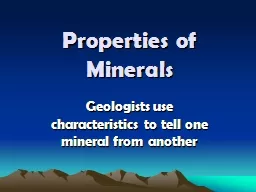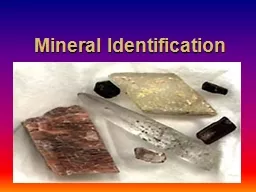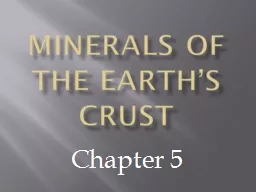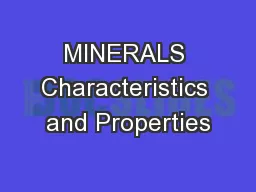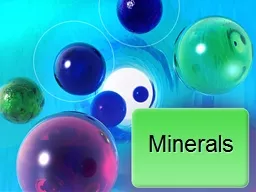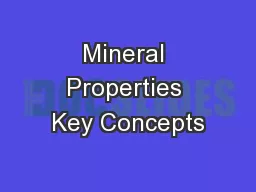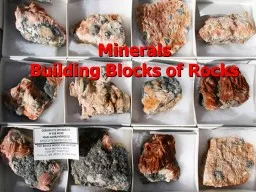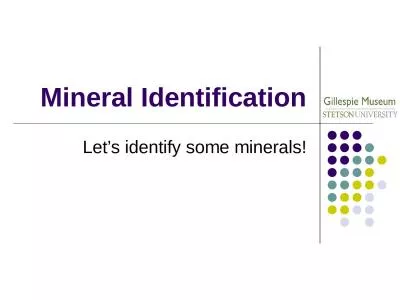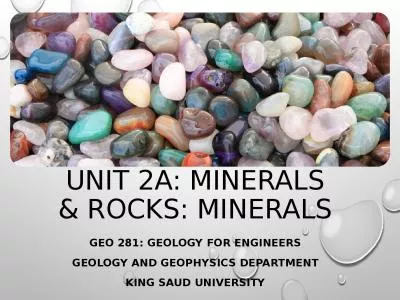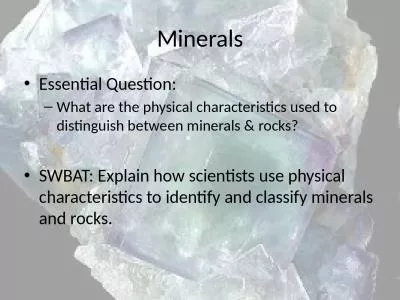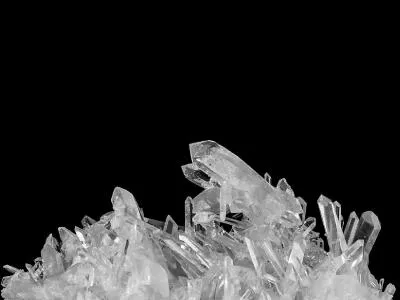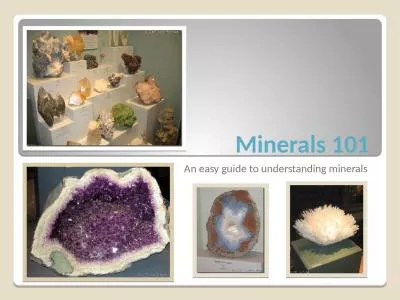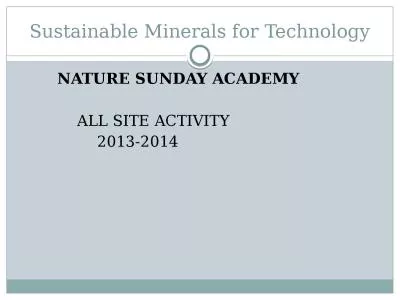PPT-Properties of Minerals Geologists use characteristics to tell one mineral from another
Author : riley | Published Date : 2022-06-14
What is a Mineral Must be a solid Must occur in nature Must have a definable chemical composition NaCl Must have a crystalline structure Must be inorganic Video
Presentation Embed Code
Download Presentation
Download Presentation The PPT/PDF document "Properties of Minerals Geologists use ch..." is the property of its rightful owner. Permission is granted to download and print the materials on this website for personal, non-commercial use only, and to display it on your personal computer provided you do not modify the materials and that you retain all copyright notices contained in the materials. By downloading content from our website, you accept the terms of this agreement.
Properties of Minerals Geologists use characteristics to tell one mineral from another: Transcript
Download Rules Of Document
"Properties of Minerals Geologists use characteristics to tell one mineral from another"The content belongs to its owner. You may download and print it for personal use, without modification, and keep all copyright notices. By downloading, you agree to these terms.
Related Documents

